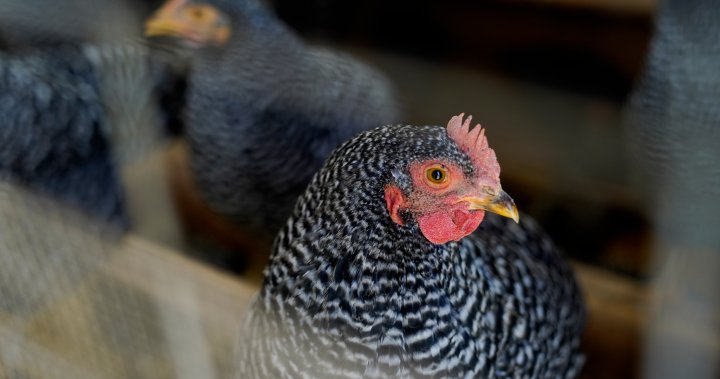General News
As U.S. sees record chicken prices, economists say it’s unlikely to hit Canada – National

As beef prices continue to impact people’s wallets both in Canada and the U.S., some are turning to chicken for a more affordable protein but south of the border some poultry production companies are scaling back in an effort to cut costs.
Companies like Tyson Foods and Pilgrim’s Pride could see earnings improve as a result, with Tyson even closing six chicken plants this year to reduce costs. That boost in earnings would still leave consumers’ facing an extra pinch on their wallets as prices rise due to lower production.
Chicken prices in the U.S. are already hitting record highs, according to reports, and the U.S. Department of Agriculture projects consumption of chicken is expected to exceed 100 pounds per person this year for the first time ever.
But while Americans are starting to voice concerns over the rising cost of poultry, that same stress may not be as present in Canada.
Food economist Mike von Massow, a professor in the Department of Food, Agriculture and Resource Economics at the University of Guelph, said that due to Canada’s supply management system, Canadians don’t have to be concerned of the price going through the roof even as demand rises.
“Just because all of a sudden we’re eating more chicken it’s not happening sort of at the snap,” he said. “It might be accelerating a little bit because of high food prices, and we know chicken is a more affordable protein per kilogram, but the industry has responded as that demand has changed.”

He added that unlike beef products, which have seen demand dwindle due to increased prices as a result of low supply — cattle herd numbers were at their lowest in more than 30 years in August, according to the Canadian Cattle Association — chicken production has been increasing “in lockstep” with demand.
Canada’s chicken, as von Massow noted, has not been immune to price increases overall due to ongoing inflation with fresh and frozen chicken seeing an 8.9 per cent increase year over year in August, but it was a drop from July where it saw a 14.3 per cent rise.
Von Massow added that the culling of chicken production in the U.S. is unlikely to impact Canadians because of the small amount that comes to Canada, where only up to 10 per cent of chicken is imported.
“Even if our imports from the U.S. were to disappear, we would still be relatively stable in terms of pricing in this country,” von Mossow said.

The Chicken Farmers of Canada, which represents nearly 3,000 farmers, said in a statement to Global News that production is planned so that farmers can provide a “steady supply” of chicken by raising the required volume to meet demand.
A spokesperson said that predictability in chicken imports “plays a crucial role” in determining how much local farmers need to produce to meet the needs of Canadian consumers.
“By using this system, consumers are assured a reliable supply of fresh, high-quality food, and that the changes that occur with our trading partners outside of Canada is unlikely to have a major impact on the Canadian sector,” Jean-François Bérubé said.
But food researcher Sylvain Charlebois said while the chicken market is stable, avian flu cases that impacted the industry in late 2022 and early 2023 lowered the inventory of chickens for meat in some provinces, prompting a price increase.
Overall, though, “the architecture of the industry is much more stable, which is why you shouldn’t be expecting any major fluctuations affecting chicken prices,” he said.

But chicken prices in the country could still face instability depending on several factors.
For example, a larger avian flu outbreak could impact prices if it results in a shortage of chickens and other poultry. However, von Mossow said he did not believe there was a “substantial” risk from such a disease due to stringent protocols in Canada.
“It’s not something that’s keeping me up at night by any stretch,” von Mossow said, while also noting that the risk isn’t zero.
But Charlebois said even in the supply management system, one factor that could create a definite price hike is production cost.
“What drives prices higher are costs,” Charlebois said. “If the cost to produce chicken goes up, then prices go up. That’s basically it.”
–with files from Reuters
© 2023 Global News, a division of Corus Entertainment Inc.
Disclaimer: No copyright infringement intended. All rights and credits reserved to respective owner(s).

























